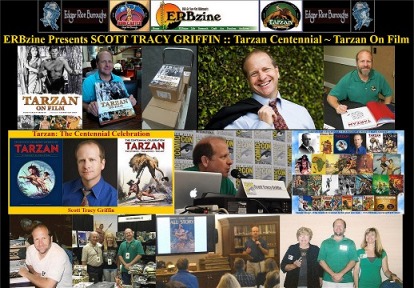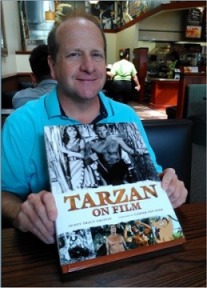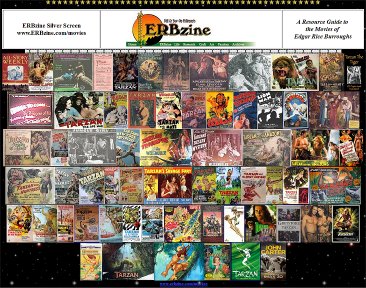
The First and Only Weekly Online Fanzine Devoted to the Life and Works of Edgar Rice Burroughs Since 1996 ~ Over 15,000 Webpages in Archive |

The First and Only Weekly Online Fanzine Devoted to the Life and Works of Edgar Rice Burroughs Since 1996 ~ Over 15,000 Webpages in Archive |
 .
. 

![]()
|

Click for full-size promo collage
![]()
Celebrate the 100th Anniversary
of Tarzan of the Apes in film with
SCOTT TRACY GRIFFIN and his
TARZAN
ON FILM
PART I :: PART
II :: PART III
:: PART IV :: PART
V :: PART VI ::
PART
VII :: PART VIII
:: PART IX
:: PART X :: PART
XI:: PART XII::
PART
XIII::
PART XIV::
PART
XV
![]()
ERBzine SILVER SCREEN SERIES
www.ERBzine.com/movies
![]()
TARZAN OF THE APES (1918)
www.erbzine.com/mag5/0503.html
THE ROMANCE OF TARZAN
www.erbzine.com/mag5/0504.html
THE SON OF TARZAN: SERIAL and FEATURE FILM
www.erbzine.com/mag5/0589.html
THE ADVENTURES OF TARZAN
www.erbzine.com/mag5/0590.html
TARZAN AND THE GOLDEN LION
www.erbzine.com/mag5/0591.html
TARZAN AND THE GOLDEN LION: Photoplay Edition
www.erbzine.com/mag4/0496.html
TARZAN THE MIGHTY
www.erbzine.com/mag5/0592.html
TARZAN THE APE MAN
www.erbzine.com/mag6/0611.html
TARZAN THE FEARLESS
www.erbzine.com/mag5/0595.html
TARZAN AND HIS MATE
www.erbzine.com/mag6/0615.html
NEW ADVENTURES OF TARZAN
www.erbzine.com/mag5/0584.html
TARZAN ESCAPES
www.erbzine.com/mag6/0618.html
![]()

![]()
Celebrate the 100th Anniversary
of Tarzan of the Apes in film with
SCOTT TRACY GRIFFIN and his
TARZAN ON FILM
CONTENTS
PART I :: PART
II :: PART III
:: PART IV :: PART
V :: PART VI ::
PART
VII :: PART VIII::
PART
IX
:: PART X
:: PART XI:: PART
XII::
PART XIII::
PART
XIV::
PART XV::
PART
XVI::
PART XVII
::
PART XVIII
:: PART XIX :: PART
XX :: PART
XXI::
PART XXII::
PART
XXIII:
![]()
![]()
![]()
![]()

BILL
HILLMAN
Visit
our thousands of other sites at:
BILL
AND SUE-ON HILLMAN ECLECTIC STUDIO
ERB
Text, ERB Images and Tarzan® are ©Edgar Rice Burroughs, Inc.-
All Rights Reserved.
All
Original Work ©1996-2018/2019 by Bill Hillman and/or Contributing
Authors/Owners
No
part of this web site may be reproduced without permission from the respective
owners.